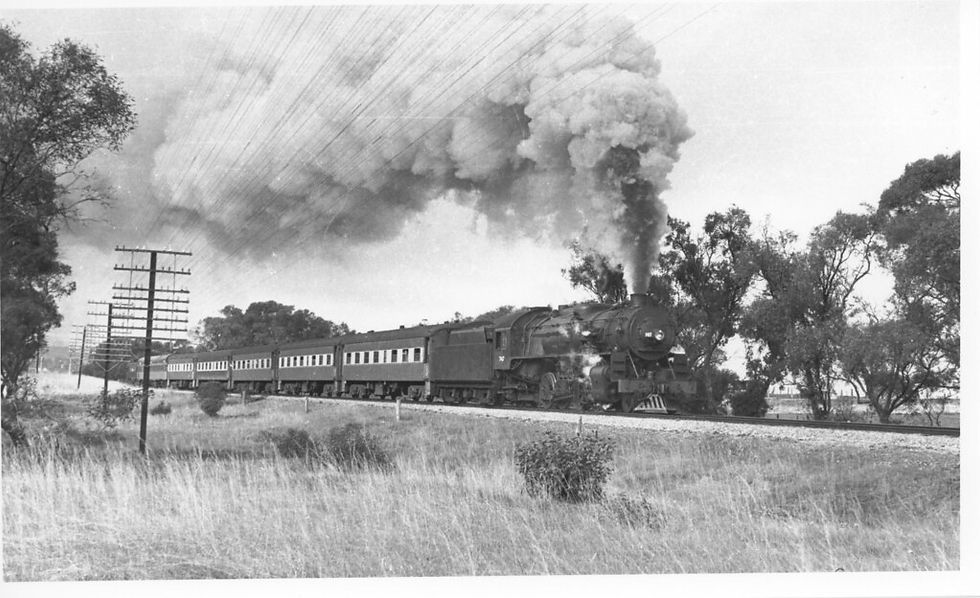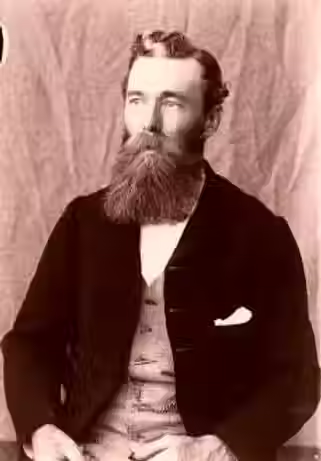Sir Ross Smith
- ruwoltjon
- Apr 30
- 5 min read
Sir Ross Macpherson Smith, KBE, MC & Bar, DFC & Two Bars, AFC (4 December 1892 – 13 April 1922) was a South Australian aviator. He and his brother, Sir Keith Macpherson Smith, were the first pilots to fly from England to Australia, in 1919.
Early life

The Smith brothers were born in Semaphore, Adelaide, in 1890 and 1892, to Andrew and Jessie (nee Macpherson) in Adelaide.
Married in 1888, Andrew and Jessie brought up their sons Ross, Keith and Colin on Mutooroo Station S.A. where they gained skills in riding and bushcraft.
In 1906 the family moved to father Andrew Smith's home in Moffat, Scotland, where the brothers studied at Warriston School for two years.
The family returned to Australia in 1908 and the brothers attended Queen's School and St Peter's College.
The youngest brother Colin was born at Semaphore, South Australia , 29 April 1895 and died of Wounds, Belgium, 6 October 1917, aged 22 years

Military History
On returning to Australia, Ross Smith joined the Australian Mounted Cadets and was selected in 1910 to tour Britain and the United States of America as a South Australian representative.
He then joined the 10th Australian Regiment, the Adelaide Rifles.
Before the outbreak of war in 1914 Ross was employed as a warehouse man in Adelaide for G. P. Harris Scarfe & Co.
Smith enlisted in 1914 in the 3rd Light Horse Regiment, landing at Gallipoli on 13 May 1915.
On 11 August he attained the rank of regimental sergeant major and was commissioned second lieutenant on 5 September.
Invalided to England in October, he was promoted lieutenant on 1 March 1916 and three weeks later embarked for Egypt to rejoin his old regiment.
With the 1st Light Horse Brigade, 1st Machine-Gun Squadron, his principal action occurred during the battle of Romani on 4 August 1916.
The British Egyptian Expeditionary Force (EEF) stopped the Ottoman army at the Battle of Romani and drove them back to Magdhaba and across the Sinai to Rafa to reoccupy Egyptian territory and secure the safety of the Suez Canal.
Qualifying as an observer in December 1916, and later as a pilot, Ross served mainly with No.1 Squadron, Australian Flying Corps (No. 67 Squadron R.F.C.), a general purpose squadron flying a variety of aircraft in defence of the Suez Canal zone.
![Above: Turkish field artillery advancing towards the Suez Canal, 1915, attacking across the Sinai. [Imperial War Museum image Q86535]](https://static.wixstatic.com/media/b01a49_229032706e9f465aa6a9699bc2031747~mv2.jpg/v1/fill/w_800,h_486,al_c,q_85,enc_avif,quality_auto/b01a49_229032706e9f465aa6a9699bc2031747~mv2.jpg)
Above: Turkish field artillery advancing towards the Suez Canal, 1915, attacking across the Sinai. [Imperial War Museum image Q86535] In July 1917 he responded to a call for volunteers to join the Australian Flying Corps, the transfer taking effect on 4 August.



The first Military Cross was awarded while Ross, still an observer, landed in the face of the enemy to rescue a fellow officer who had been brought down.
Bombing and photography and air to air combats brought the other operational awards.
By the end of the war Ross had acquired considerable experience flying the twin-engined Handley Page 0/400 bomber which had been attached to the squadron.
He conducted a bombing raid in the huge Handley Page 0/400 during the Battle of Armageddon (Battle of Megiddo) where he destroyed the critical telephone exchange at El Afule and severely damaged the railway junction.
The Battle of Megiddo was fought between 19 and 25 September 1918, on the Plain of Sharon, as well as on the Esdralon Plain at Nazareth.
The battle was the final Allied offensive of the Sinai and Palestine Campaign of World War I.
The grand battle resulted in many tens of thousands of German and Ottoman prisoners and many miles of territory being captured by the Allies.

The Ottoman Yildirim Army Group's (which contained the German Asia Corps) carts and gun carriages destroyed by Allied EEF aircraft on the Nablus-Beisan road, a significant route in Palestine during World War I. The road was a key location for battles, including the Battle of Nablus in 1918. Ross Smith had flown the Handley Page 0/400 bomber not only on bombing operations in Palestine but also on long photographic flights.
He was consequently selected to co-pilot the aircraft in a pioneer flight from Cairo to Calcutta, leaving Cairo on 29 November 1918 and arriving in Calcutta on 10 December.
A tentative attempt was made from Calcutta to survey by sea an aerial route through to Australia. This was abandoned at Timor (no RAF Bases).
He was later twice awarded the Military Cross and the Distinguished Flying Cross three times, becoming an air ace with 11 confirmed aerial victories.

Ross Smith was pilot for T. E. Lawrence (Lawrence of Arabia). He is mentioned several times in Lawrence's book, Seven Pillars of Wisdom, Chapter 114.
He is praised in Lawrence’s book for his grit in taking to the skies to drive off enemy aircraft between mouthfuls of breakfast.
The Great Air Race
In 1919 the Australian government offered a prize of £A10,000 for the first Australians in a British aircraft to fly from Great Britain to Australia.
Vickers entered a converted Vimy bomber (G-EAOU) (the registration being whimsically said to stand for "God 'elp all of us"), crewed by Captain Ross Macpherson Smith with his brother Lieutenant Keith Macpherson Smith as co-pilot and mechanics Sergeant W.H. (Wally) Shiers and Sergeant J.M. (Jim) Bennett.
Sir Ross Smith's diary, which details his and his brother Keith's historic 1919 flight from England to Australia, is a primary source for understanding this epic achievement.

The Air Ministry allotted the Smiths the letters 'G-E A O U' of which G stood for Great Britain. In view of the long flight the airmen interpreted this marking as 'God 'Elp All of Us'.
England The Air Ministry allotted the Smiths the letters 'G-E A O U' of which G stood for Great Britain. In view of the long flight the airmen interpreted this marking as 'God 'Elp All of Us'. "We left on the morning of November 12th, on a clear frosty morning, with a forecast of 'totally unfit for flying'. Reaching the coast of France, we flew into a snowstorm and had to climb to 9000 ft." "I have never felt so cold or miserable in my life as I did during those few hours. Eventually we reached Lyons and landed. We all turned into bed very early, very tired, but very happy."
Rome "It was a frosty daybreak... eastwards the Alps reared up with a maze of glistening snow peaks. Flying over Nice a large crowd had assembled to cheer us up. Our flight to Rome was one long battle against heavy headwinds and through dense clouds. It was not till late in the afternoon that we were above the city of the Caesars."
To keep reading the account of the remarkable first flight half-way round the world with 23 stopping-places, please open this page: https://www.clarehistory.com/sir-ross-smith
Note that since the Victory of World War 1, the Smiths were able to make many of their stops at British or Allied Flying Corps bases.

Other pages in this series:
Still to come:





Comments